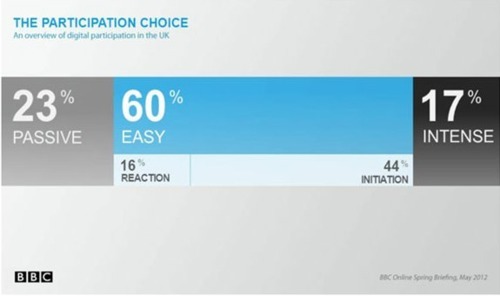Assignment #2 (15%) – Web 2.0 Participation - Throughout
This course on New Media Narratives is informed by contemporary thinking on transliteracy, meaning the ability to read, write and interpret across a range of media. For this reason, it is important that the course itself is delivered across these environments and that you develop a fluent and practical understanding of their operation. Teaching is not confined to the model adopted by some distance learning courses in which material is asynchronously downloaded by students and thenceforth treated as conventional print texts. Likewise, video, audio and synchronous Skype chats and presentations are useful and will be included as learning materials.
Much of the online learning in this course happens within Blackboard and our class blog. We will make use of other networked environments, including but not limited to: wikis, delicious, Twitter, audioboom, flickr, delicious and more. Therefore, participation is essential to online learning, and this in turn requires regular logging-on. Besides regular logging on, your active and sometimes synchronous participation will be required. For the inaugural running of this course, we have the great pleasure and benefit of several key people in the field who have agreed to give up their time and share their expertise and experience with us (see the syllabus). Sometimes this sharing may unfold through a blog post to which you will be required to comment and respond in a timely manner. At other times, discussions will occur in real time via a Skype chat or call. During these synchronous events, your participation is very much required and encouraged. All synchronous meeting times/places will be indicated well in advance on the class blog and in Blackboard. It is your duty to check both “home-bases* frequently.
Participation is not, however, simply a case of being online. For NMN, participation includes reading and viewing material, doing some of your own research, and discussing material and ideas (on the blog, in Blackboard, during Skype chats etc...) with an open, questioning mind and strong opinions. It does not necessarily include understanding all the readings immediately. For your participation you will not be assessed upon your brilliance, but upon the basis of your involvement. This includes saying things like “I didn’t understand the bit where Howard Rheingold notes...” or “Thomas presents and interesting argument however she doesn’t consider...” Such engagement will form the essence of our online learning and community.
Rubric
1. Participate regularly.
Managing tasks in an online environment invariably involves some sort of communication or group work with your peers. In some courses you may find that regular participation is the norm, whereas in others there may be less activity. It all depends on the nature of the course and, of course, the people involved. Nearly all groups go through some peaks and troughs of activity. If the main communication you have with other students is by using discussion boards or other tools in e-class, you will get to know people well. Even so, not having the usual face-to-face contact can make a difference. The main way of ensuring that others know you are participating and ‘okay’ is to continue contributing to the online course.
2. Let others know when you will be offline for a prolonged period.
Don’t feel you have to be permanently ‘present’ online. If, for some reason, you feel you are unable to contribute as much as others for a time there’s no need to panic. Some people find it useful to let others know when they will be next available or whenever they will be offline for a particular time span. The main thing is to keep a focus on essential contributions related to learning issues and teamwork.
3. Post messages to signal any difficulties.
Guest lecturers and I will rely on you posting messages or e-mailing about any difficulties, confusion or clarification that you feel you need.
4. Respond to and use your peers as a source of support.
Online communication is practical in that you can add something, ask a question or
make a point as you think of it, rather than wait your turn. Other students are a good source of information as well as myself and our guest lecturers and may often be able to answer your question.
5. Make your messages clear.
It can be helpful if everyone keeps to clear messages, headings and feedback, especially for others who need to have a quick read to catch up on anything they may have missed.
6. Remind yourself of what to do when next online
Before logging off from a session, you can make use of the text pad to remind yourself of anything you need to finish next time you logon. The ‘What’s New’ feature in Blackboard lists all items that have been added since you last logged on. You can also always check the class blog.

No comments:
Post a Comment